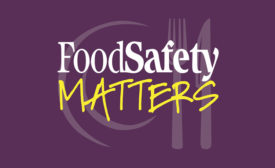Contamination Control
Upcoming EPA Deadline to Disclose PFAS Use Means Likely Surge in Litigation for Food Industry
Reports to EPA by PFAS manufacturers and importers are likely to lead to a major increase in new consumer claims
February 12, 2025
Proactive Allergen Prevention in the Foodservice Industry
The primary controls to prevent undeclared allergens must start in the supply chain and continue in the foodservice establishment, using multiple elements to prevent the hazard
February 11, 2025
Never miss the latest news and trends driving the food safety industry
eNewsletter | Website | eMagazine
JOIN TODAY!Copyright ©2025. All Rights Reserved BNP Media.
Design, CMS, Hosting & Web Development :: ePublishing













